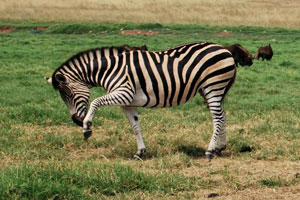
BY OBERT SIAMILANDU ERRATIC rainfall patterns have affected wildlife projects in most parts of the country including the Kavango Zambezi Transfrontier Conservation Area (Kaza TFCA) where communities heavily depend on proceeds from wildlife sales for their livelihoods.
The projects fall under the Community Areas Management Programme for Indigenous Resources (Campfire).Campfire Association director Charles Jonga told NewsDay that they were now exploring new livelihoods avenues to reduce over-dependence on wildlife.
“Most of the communities within the Kaza TFCA rely heavily on wildlife income from the Campfire programmes and these areas have the lowest agricultural potential due to very low rainfall as they are only technically considered as suitable for wildlife,” Jonga said.
“With the COVID-19 effects; travelling restrictions led to limited hunts. There were low tourist figures and this meant that communities needed to diversify and look for other livelihood programmes,” he said, adding that the Campfire programmes were generating too little to sustain community activities.
“To ensure improved standards of living and well-being of communities, strategies are crucial in opening new livelihood avenues that can ensure individual households beneficiation. Crops and livestock in the areas are affected by wildlife which raids them. There is need for other sustainable livelihood options,” he said.
“Ownership of strategies by the communities will ensure their dedication to implement various proposed strategies. Communities have relied more on natural resources, agriculture and natural based tourism.”
The Kaza TFCA area cuts across borders of five southern African countries; namely Zimbabwe, Angola, Botswana, Namibia and Zambia and it is the world’s largest terrestrial conservation area.
The Kaza livelihoods diversification strategy seeks to empower communities with a wider range of livelihood choices through supporting the development of human, social, productive and financial capital, thus reducing unsustainable dependency on diminishing natural capital reserves;
- Chamisa under fire over US$120K donation
- Mavhunga puts DeMbare into Chibuku quarterfinals
- Pension funds bet on Cabora Bassa oilfields
- Councils defy govt fire tender directive
Keep Reading
Follow Obert on Twitter @osiamilandu











